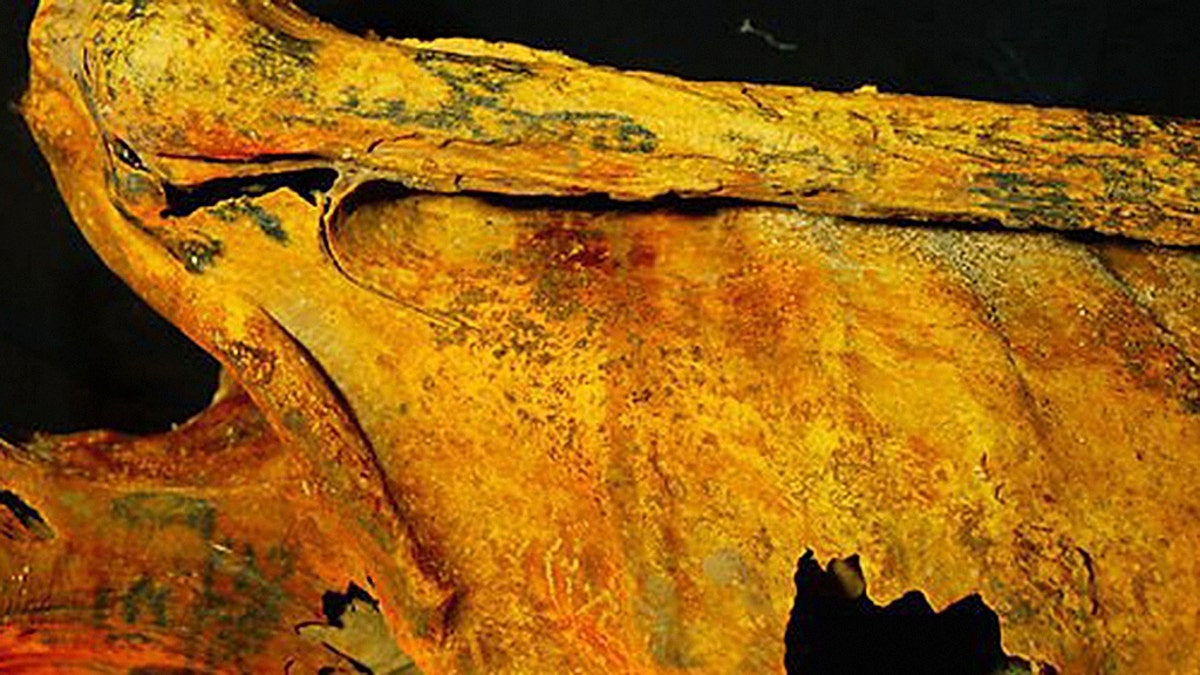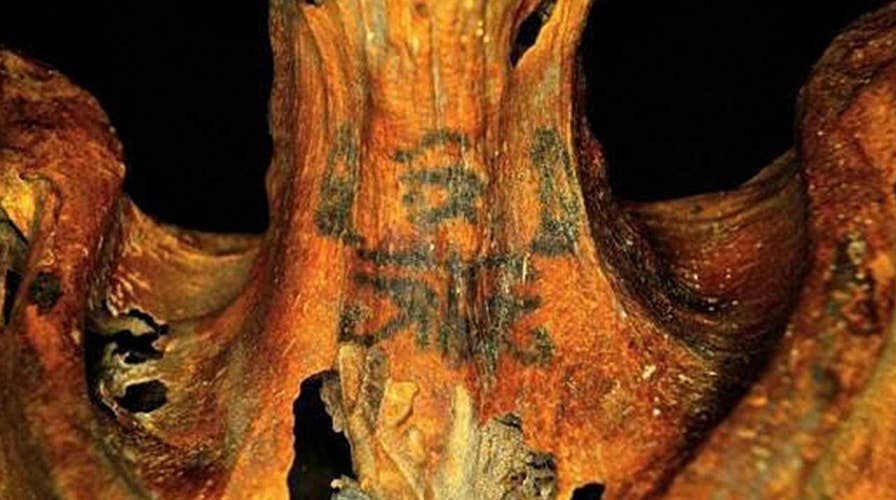Mystery solved: 3,000 year old tattooed mummy is a female
Researchers had been working for years to determine the meaning of 23 different markings on the mummy. The body was discovered in a tomb near Luxor, Egypt.
A portion of an ancient Egyptian mummy buried inside a Luxor tomb in 2014 was covered in tattoos — some symbols so well-preserved, that researchers were able to clearly label them. But identifying the person behind the markings proved more difficult. After years of research, Egyptian authorities believe they finally have a clearer picture of who this now 3,000-year-old person was.
Remains of the mummy, which had more than 23 different tattoos displayed across various parts of the body, were uncovered by researchers with the French Institute of Oriental Archaeology during an excavation expedition in historical site Deir el-Medina on the west bank of Luxor. Images of bulls, cows, lotus flowers and, most notably, the "magical" Udjat eye — an Egyptian symbol of royal power and health, personified by the goddess Wadjet — that covered the upper body of the mummy lead researchers to believe it was a woman.
"Radiographic data together with analysis of the tattoos demonstrates that tattooing in Egypt was used to permanently and publicly display female religious identities," Anne Austin, a Stanford University archaeologist who studied the ancient body, explained in a 2016 paper. "The presence of multiple instances of tattooing in a single individual further demonstrates that one’s religious identity could evolve and grow throughout adulthood."
FBI CRACKS ITS OLDEST CASE OF MYSTERIOUS EGYPTIAN MUMMY'S HEAD
Dr. Mostafa Waziri, secretary-general of the Supreme Council of Antiquities, confirmed Austin's hypothesis last week.
"Scientific and archaeological studies reveal that it is the mummy of a woman who probably lived between 1300 and 1070 B.C. and died when her age ranged between 25 and 34 years," Waziri said in a statement to International News on Oct. 18.
Her name and title are still unknown, but Waziri told Egypt Today she was likely an "elite woman."

The woman likely lived between 1300 and 1070 BC, according to Egyptian officials. (Egyptian Ministry of Antiquities)
Other mummies with smaller, less pronounced ink were also found during the 2014 mission, but none compared to this woman, Waziri explained. Her body art featured "real figures" and was clearly a status symbol.
“Any angle that you look at this woman, you see a pair of divine eyes looking back at you,” Austin described during a 2016 meeting with the American Association of Physical Anthropologists, adding the tattooing process was probably "very time consuming, and in some areas of the body extremely painful."
This mysterious tattooed mummy isn't the first ancient figure to capture archaeologists' attention in recent years.
Experts in the U.K. recently found the world's oldest figurative tattoos on two ancient Egyptian mummies, including the oldest tattooed female ever discovered. Their incredible findings were published in the Journal of Archaeological Science in March.
WORLD'S OLDEST FIGURATIVE TATTOOS FOUND ON 5,000-YEAR-OLD EGYPTIAN MUMMIES
The male mummy, who was discovered about 100 years ago, has a wild bull and a Barbary Sheep tattooed on his upper arm, according to experts. S-shaped and linear motifs were identified on the upper arm and shoulder of the female mummy. They mummies, which date back to between 3351 B.C. and 3017 B.C., are now in the collection of the British Museum in London.
“Incredibly, at over five thousand years of age, they push back the evidence for tattooing in Africa by a millennium,” Daniel Antoine, one of the lead authors of the research paper and the British Museum’s curator of physical anthropology, said in a March statement.
Before this stunning discovery, archaeologists believed only females donned tattoos in ancient Egypt.
Fox News' James Rogers contributed to this report.
